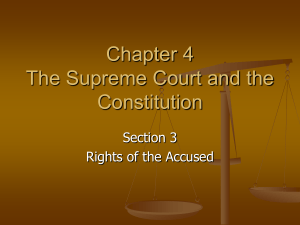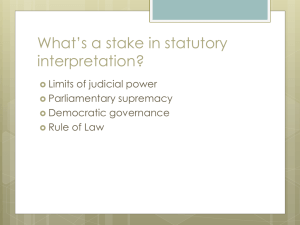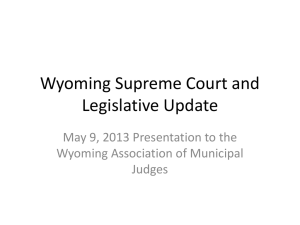Dudenhoeffer Revised
advertisement
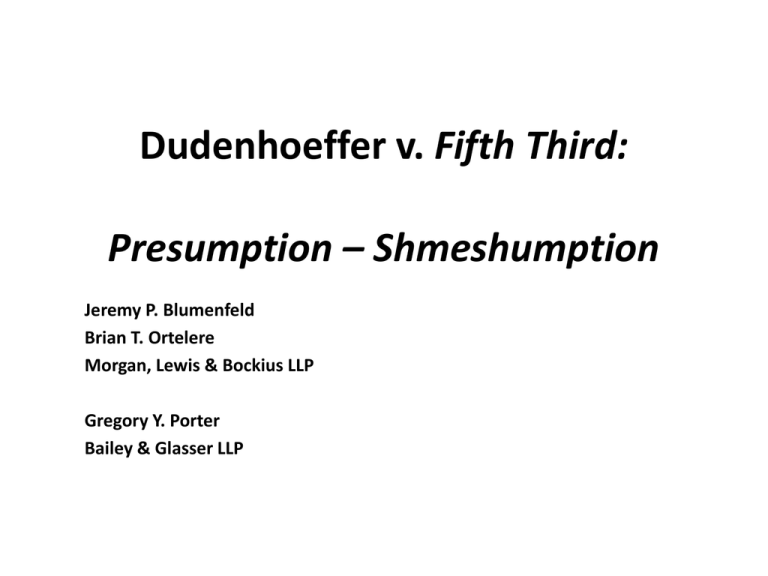
Dudenhoeffer v. Fifth Third: Presumption – Shmeshumption Jeremy P. Blumenfeld Brian T. Ortelere Morgan, Lewis & Bockius LLP Gregory Y. Porter Bailey & Glasser LLP Background • ERISA Employer Stock Claims – Fiduciary breach claims challenge plan investments in employer stock of public companies. – More than 200 suits brought since the Enron/WorldCom scandals of 2001 and 2002. – Two primary prudence claims: • Failed to act on public information. • Failed to act on material non-public information. 2 The Supreme Court’s Ruling • No Presumption of Prudence – 9-0 decision. • The policy oriented members of the Court and the statutory text oriented members of the Court on the same page were all able to agree. • Doesn’t happen every day. – Every Court of Appeals to have addressed the issue was wrong. 3 The Supreme Court’s Ruling • Statutory basis for presumption—None • “In our view, the law does not create a special presumption favoring ESOP fiduciaries. Rather, the same standard of prudence applies to all ERISA fiduciaries, including ESOP fiduciaries, except that an ESOP fiduciary is under no duty to diversify the ESOP’s holdings.” • Non-pecuniary purposes such as favoring employee ownership do not impact analysis. • The only purpose that matters is protecting and enhancing benefits? 4 The Supreme Court’s Ruling • Plan basis for presumption—None. – “[T]he duty of prudence trumps the instructions of a plan document, such as an instruction to invest exclusively in employer stock even if financial goals demand the contrary.” – Broader implications. • Primacy of plan document doctrine cannot diminish statutory duties • Hard wiring for investments of any kind creates no presumption • Other plan terms? 5 The Supreme Court’s Ruling – Recognized Tensions in Context of Publicly traded securities • Provided pleading guidance • Absent “special circumstances,” cannot state a claim based only on public information because fiduciaries have no duty to second-guess efficiency/price of market with respect to public information • Maybe state a claim arising from non-public material information – But no duty to trade on material inside information – But no duty to violate insider trading law – But ERISA cannot compel disclosures that conflict with securities disclosure requirements • What does that mean? – Claims on behalf of holders not viable – Claims that should have stopped new purchases are viable – But court recognized that halting purchases might lead to disclosure problems and loss causation problems by signalling to market 6 The Supreme Court’s Ruling – Litigation • The new complaint – Companion securities fraud lawsuit – Substantial plan purchases during fraud – A theory that stopping new purchases would not have caused the stock to settle to the true, nonfraud price – Explain why stopping new purchases would not require a securities disclosure – Allege that a prudent fiduciary could not have concluded that stopping purchases would have done more harm than good because... 7 The Supreme Court’s Ruling – Litigation • The new 12(b) motion – 8 The Supreme Court’s Ruling – Litigation • Special considerations – Special circumstances a two-edged sword for defendants because presenting evidence early in the securities fraud case to rebut the presumption of market efficiency may give plaintiffs the facts they need to plead special circumstances based on public information only – Do plaintiffs really need to plead causation given forgiving pleading standards in most circuits on causation in fiduciary breach cases – Circuit variations on burdens of proof on causation may be critical if a defendant is required to prove that had the plan stopped trading, the price would have fallen instead of a plaintiff having to prove that the price would not have been impacted 9 The Supreme Court’s Ruling – Conclusions • • • • • Stock drop cases are dead Hardwiring is dead Cases like Enron, Worldcom, and the like will come back Loss causation may be the new frontier Burdens of proof may be critical 10 Additional Questions • Just shoot one/all of us an email: – bortelere@morganlewis.com – jblumenfeld@morganlewis.com – GPorter@baileyglasser.com 11

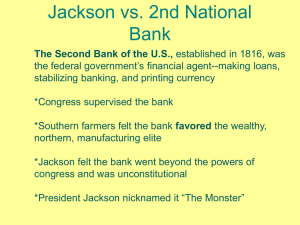
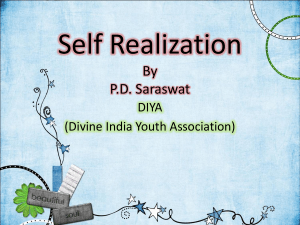
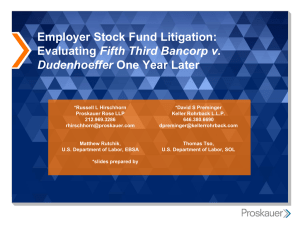
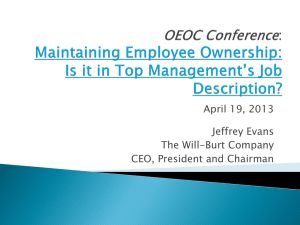
![Mark Whitenack Digital Assets PowerPoint Presentation []](http://s2.studylib.net/store/data/005383425_1-9cf830a5f2e9fc777daa963eb9460c8e-300x300.png)
